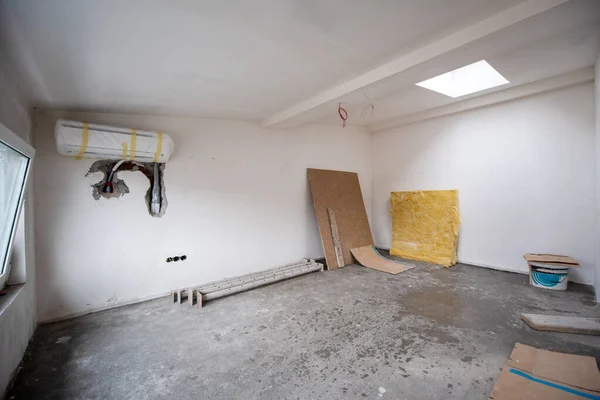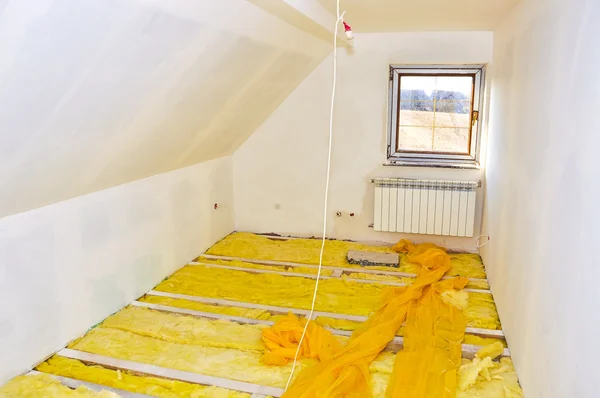Maximizing Comfort: The Ultimate Guide to Underfloor Insulation
Underfloor insulation is a crucial yet often overlooked aspect of home comfort and energy efficiency. As homeowners become more conscious of their environmental impact and seek to create comfortable living spaces, underfloor insulation has gained prominence. This comprehensive guide aims to explore the various facets of underfloor insulation, offering valuable insights and practical tips to maximize comfort in your home.
Why Underfloor Insulation Matters
Before delving into the details, it's essential to understand why underfloor insulation is a significant investment for homeowners. A properly insulated floor provides a barrier against heat loss, ensuring that the warmth generated within your home stays inside. This not only contributes to a more comfortable living environment but also leads to energy savings and reduced utility bills.
Types of Underfloor Insulation
When considering underfloor insulation, it's crucial to choose the right material for your specific needs. There are several types of underfloor insulation available, each with its unique properties.
Fiberglass Insulation
Fiberglass is a popular choice for underfloor insulation due to its affordability and excellent insulating properties. It comes in rolls or batts, making it easy to install between floor joists. Fiberglass insulation is also fire-resistant, providing an additional layer of safety to your home.
Foam Board Insulation
Foam board insulation, often made of polystyrene or polyurethane, offers high thermal resistance. It's an ideal choice for homes with limited crawl space, as it can be installed directly against the subfloor. Foam board insulation is known for its durability and moisture resistance, making it suitable for various climates.

Reflective Foil Insulation
Reflective foil insulation consists of layers of foil and plastic materials designed to reflect radiant heat. This type of insulation is particularly effective in areas with high temperatures. It is commonly used in conjunction with other insulation materials to create a comprehensive thermal barrier.
Inspection and Maintenance:
- Sealant Checks: Regularly inspect and replace seals around doors and windows. Well-sealed openings contribute to maintaining a consistent indoor temperature.
- Ventilation Assessment: Ensure adequate ventilation in your underfloor space to prevent the buildup of stale air. Proper airflow is crucial for moisture control and overall air quality.
- Electrical Wiring Safety: If your underfloor space contains electrical wiring, make sure it is well-insulated and meets safety standards. Damaged or exposed wiring can pose a fire hazard.
Energy Efficiency Measures:
- Window Coverings: Install thermal curtains or blinds to further reduce heat exchange through windows. These coverings act as an additional barrier to external temperatures.
- Solar Heating Considerations: In regions with ample sunlight, explore solar heating options. Solar panels and systems can complement underfloor insulation, significantly reducing your reliance on conventional energy sources.
- Energy-Efficient Lighting: Upgrade to energy-efficient light bulbs. While not directly related to underfloor insulation, efficient lighting contributes to overall energy savings.
Installation Tips
Proper installation is key to the effectiveness of underfloor insulation. Here are some essential tips to ensure a successful installation:
Identify and Seal Gaps
Before installing insulation, carefully inspect the underfloor area for gaps, cracks, or openings. Seal any openings to prevent drafts and heat loss. This step is crucial for maximizing the insulation's efficiency.
Consider Professional Installation
While some homeowners may opt for a do-it-yourself approach, professional installation ensures a thorough and precise job. Certified installers have the expertise to navigate challenges and install insulation correctly, providing long-lasting comfort.
Choose the Right R-Value
The R-value measures the insulation's thermal resistance. Different regions have varying climate conditions, so it's essential to choose an insulation material with the appropriate R-value for your location. This ensures optimal performance and energy efficiency.
Benefits of Underfloor Insulation
Investing in underfloor insulation yields various benefits, contributing to both comfort and sustainability:
Improved Thermal Comfort
Underfloor insulation creates a more stable and comfortable indoor temperature by preventing heat loss during colder months and heat gain in warmer months. This results in a cozy living space year-round.
Energy Efficiency
Reducing heat loss translates to lower energy consumption for heating systems in winter. Similarly, in warmer months, the insulation minimizes the need for excessive cooling, leading to energy savings and a reduced carbon footprint.

Moisture Control
Certain types of underfloor insulation, such as foam board insulation, provide a barrier against moisture. This helps prevent issues like mold and mildew, contributing to a healthier indoor environment.
Inspecting and Addressing Wear and Tear
Periodic Inspections
Regularly inspect your underfloor insulation to identify any signs of wear and tear. Look for damaged or displaced insulation material, as well as any areas where pests might have compromised the integrity of the insulation. Early detection allows for prompt repairs and ensures the continued effectiveness of your insulation.
Pest Control Measures
Insects and rodents can be attracted to insulation materials, posing a threat to their efficiency. Consider implementing pest control measures, such as sealing entry points and using non-toxic repellents, to safeguard your insulation from unwanted visitors.
Enhancing Energy Efficiency
Supplementary Insulation
Depending on your climate, you may want to consider supplementary insulation measures to further enhance energy efficiency. This could include adding weather stripping around doors and windows or installing thermal curtains to complement the benefits of underfloor insulation.
Smart Thermostats
Integrating a smart thermostat into your heating and cooling system allows for precise control over your home's temperature. By optimizing when and how your HVAC system operates, you can maximize energy efficiency and reduce overall energy consumption.
56 Yellowbox Dr, Craigieburn VIC 3064, Australia
Phone:613-8339-7111

